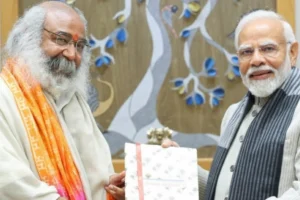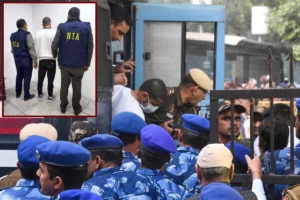
Cheetah project falls short of its own standard with 9 dead, 2 unfit, and 1 missing in less than a year. One of the crucial benchmarks for the project’s short-term success, according to the Government’s Cheetah Action Plan 2022, is the survival of at least “50% of the introduced cheetahs for the first year.” By this standard, the Kuno project is about to fall short.
Prime Minister Narendra Modi released the first group of eight cheetahs at Kuno on September 17, the day of his birthday. that population is effectively down to four with two dead and another two declared unfit for the wild. Of the four cubs born to a Namibian pair, only one survives.
On February 18, a second shipment of 12 cheetahs arrived from South Africa. Four of them are dead and one is missing barely six months later.
With six months left, the project’s original adult population of 20 has actually decreased by 45% to 11
Anticipated risk factors
Records reveal that during this time, not a single cheetah perished due to the risk factors that the Project’s Action Plan had predicted, such as competition with other predators and conflict with locals.
Also read: Tamil Nadu CM Takes Jibe At Amit Shah: Says, “Won’t Be Enslaved By Hindi”
Indeed, barring two, all deaths occurred inside bomas and the two cheetahs that died on the other side of the fence succumbed to injuries caused by radio collars that also killed two animals inside.
Conservationist Valmik Thapar stated, “This is indeed shocking given the international scrutiny and the high-profile nature of the introduction project which was flawed on several counts from the very beginning.”
Raised in a facility
Three of the eight cheetahs that were transported from Namibia in September were raised in captivity by the Cheetah Conservation Fund (CCF). Sasha, one of the three, was the project’s first fatality, and Jwala and Nabha, the other two, have spent their whole 11-month existence inside enclosures.
The “compromise” reached when Namibia’s CCF could not organize more than five “wild” cheetahs — those from larger fenced areas — and offered three animals raised in captivity as “research subjects” to meet the “hard deadline” set by India, was discussed in detail by a number of experts and project representatives.
“The first plan called for gathering all 20 cheetahs. However, because the South Africans waited so long to complete their MoU and the date was set in stone, we decided to simply obtain the Namibian portion, according to a process expert.
Also read: PM Modi, Nepal Counterpart Pushpa Kamal Dahal Reviews Various Aspects Of Bilateral Cooperation
According to a source in the Environment Ministry, this is how the three cheetahs that were grown in captivity ended up in the shipment. We all understood that the three wouldn’t survive in the wild. One died of kidney failure despite being ill from the start. According to him, the other two are maintained in bomas as breeding females.
When asked the reason behind the shipment of two cheetahs raised in captivity to India, CCF executive director Dr. Laurie Marker responded, “Under our guidance, these creatures would do well. The two that are still alive were all hunting.
She remained silent when asked why the two still alive were never let out from the confinement. One of the experts who also wrote to the Supreme Court is Marker.
When asked about the project’s cheetahs, SP Yadav, member secretary of the NTCA, responded, “Are they not beneficial for conservation breeding? One of the two cubs’ newborn cub is still alive and growing normally. These two girls were raised in captivity despite being of wild origin. We have great success reintroducing orphan tiger, lion, and leopard cubs to the wild.
Jwala gave birth
On March 29, Jwala, one of the captive-reared females, gave birth to the project’s first litter. However, reports in Kuno claimed that she failed to convince her cubs to switch from milk to meat. Three of the cubs had already died by the time Kuno’s surveillance unit discovered the four underweight, dehydrated cubs.
The cubs start to leave the den and follow their mother after a few months. As her milk output decreases, the cubs begin to consume milk as well until they switch entirely to meat. It didn’t occur to Jwala’s cubs. An specialist connected to the pro
To read more such news, download Bharat Express news apps





















